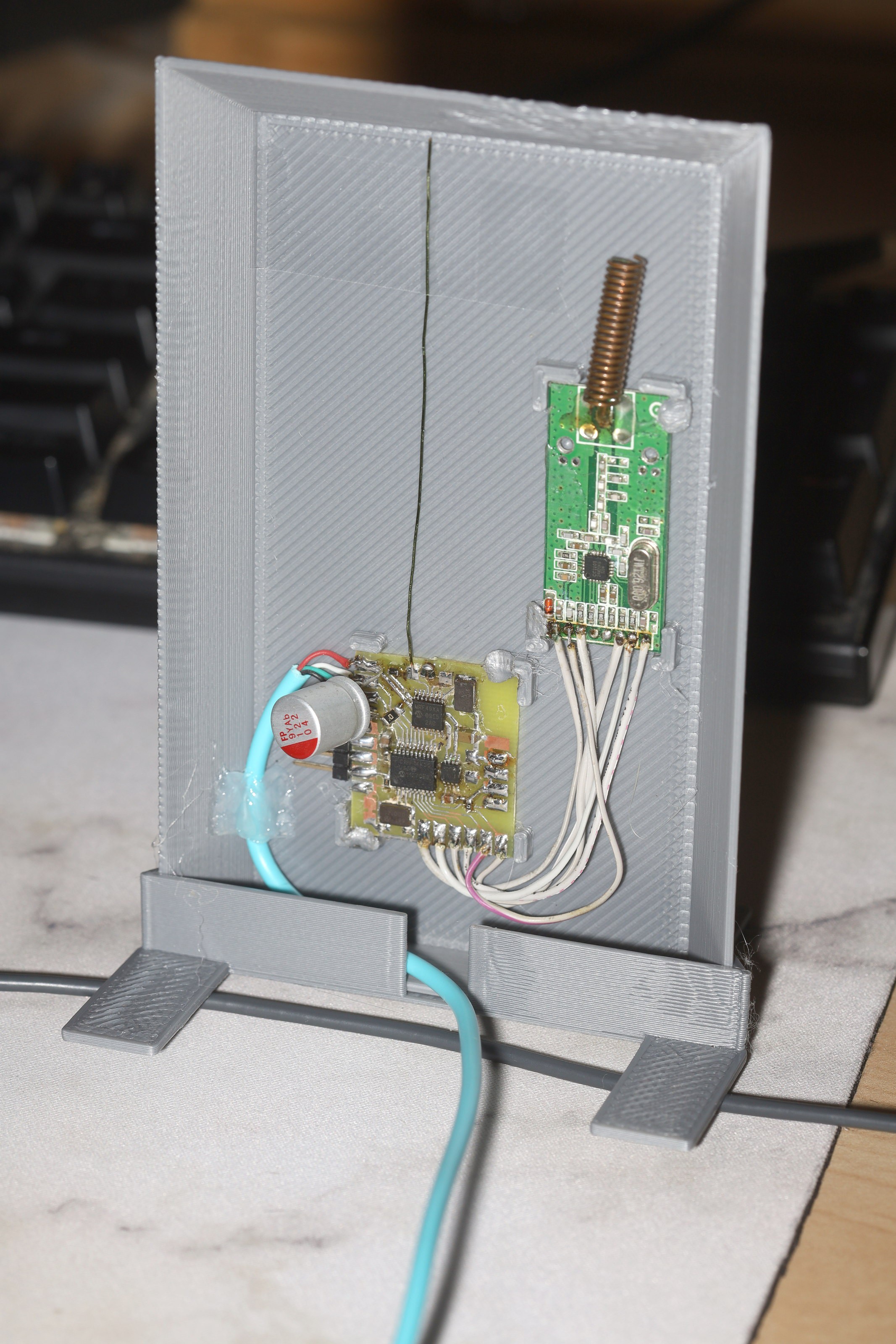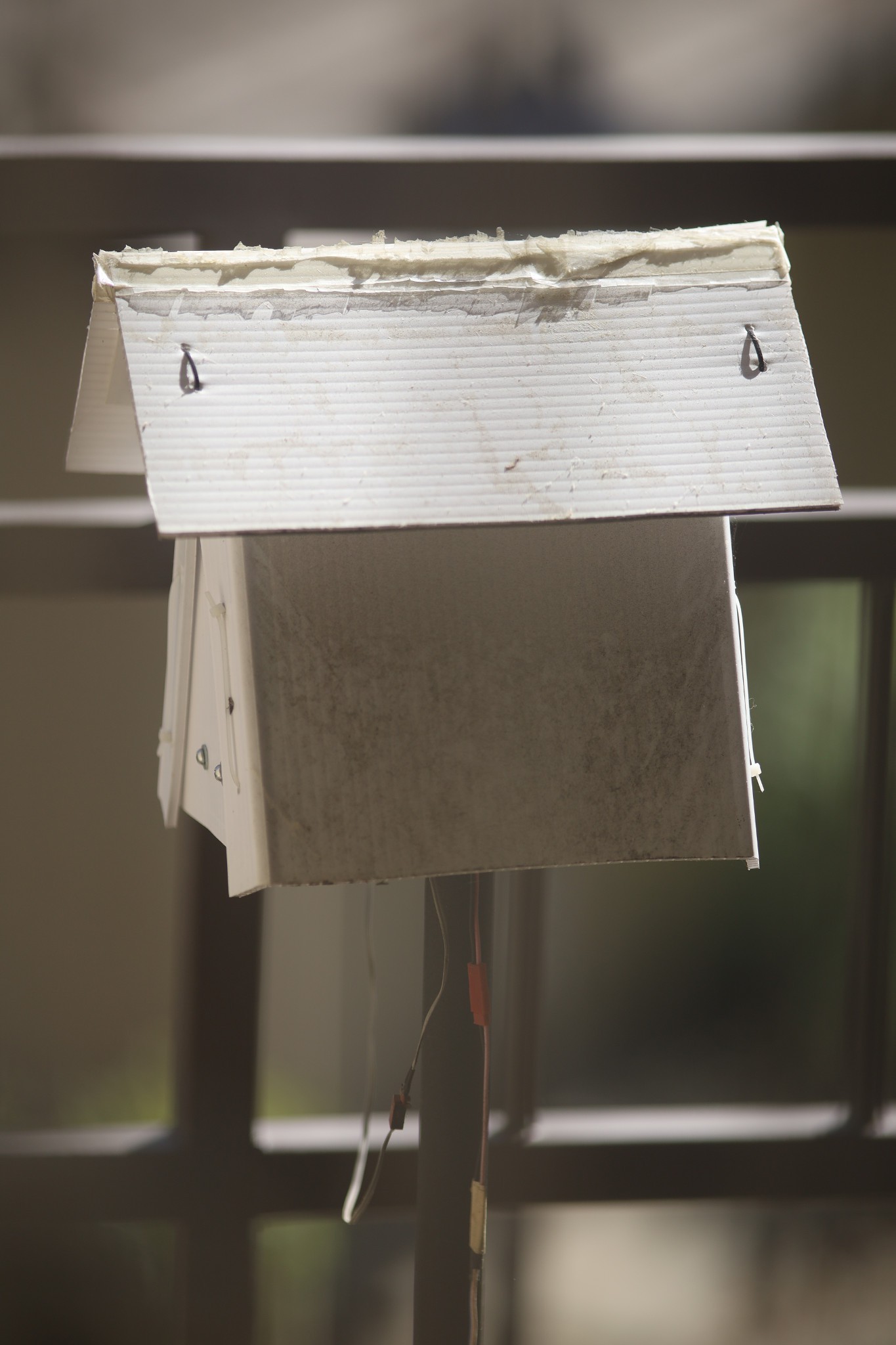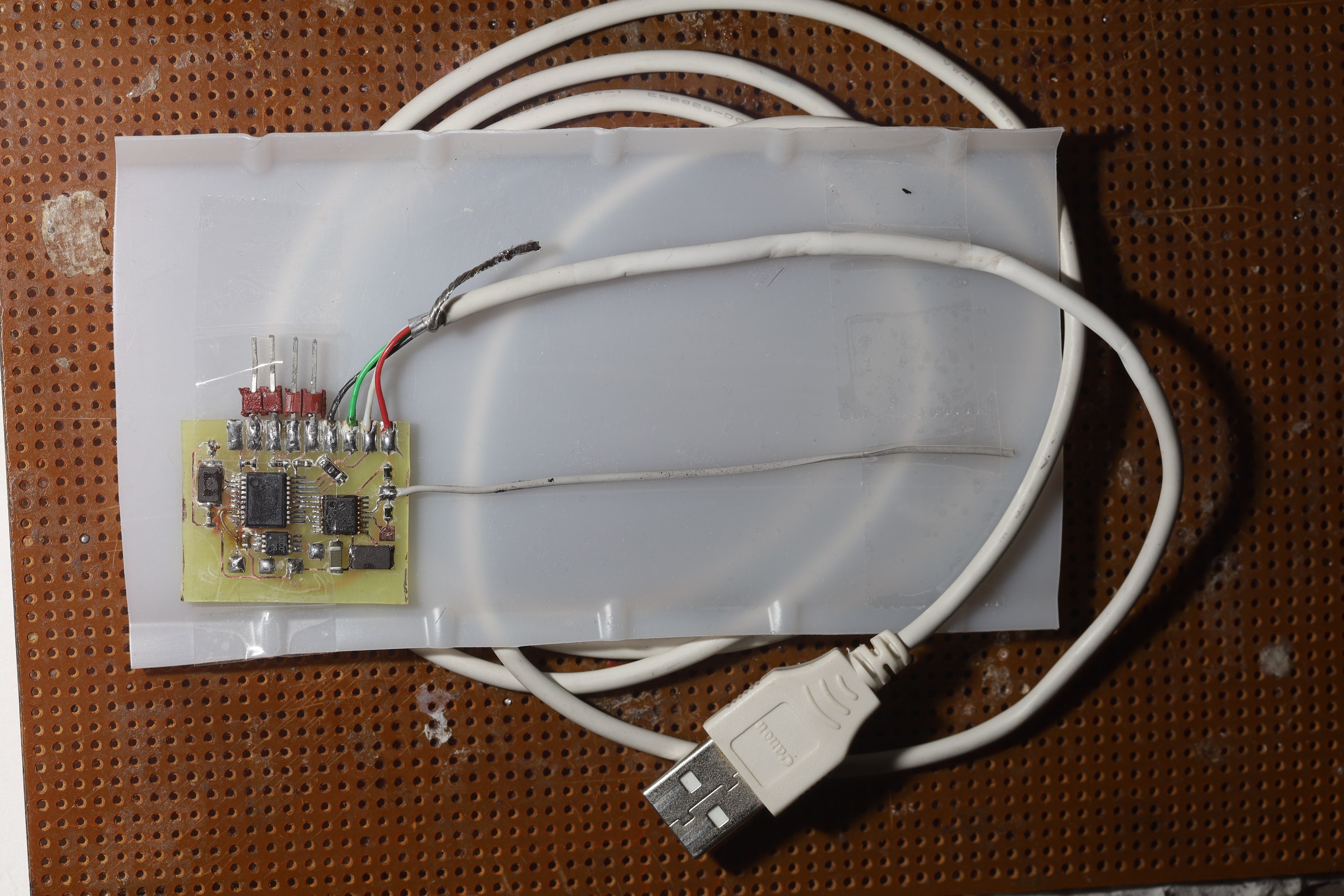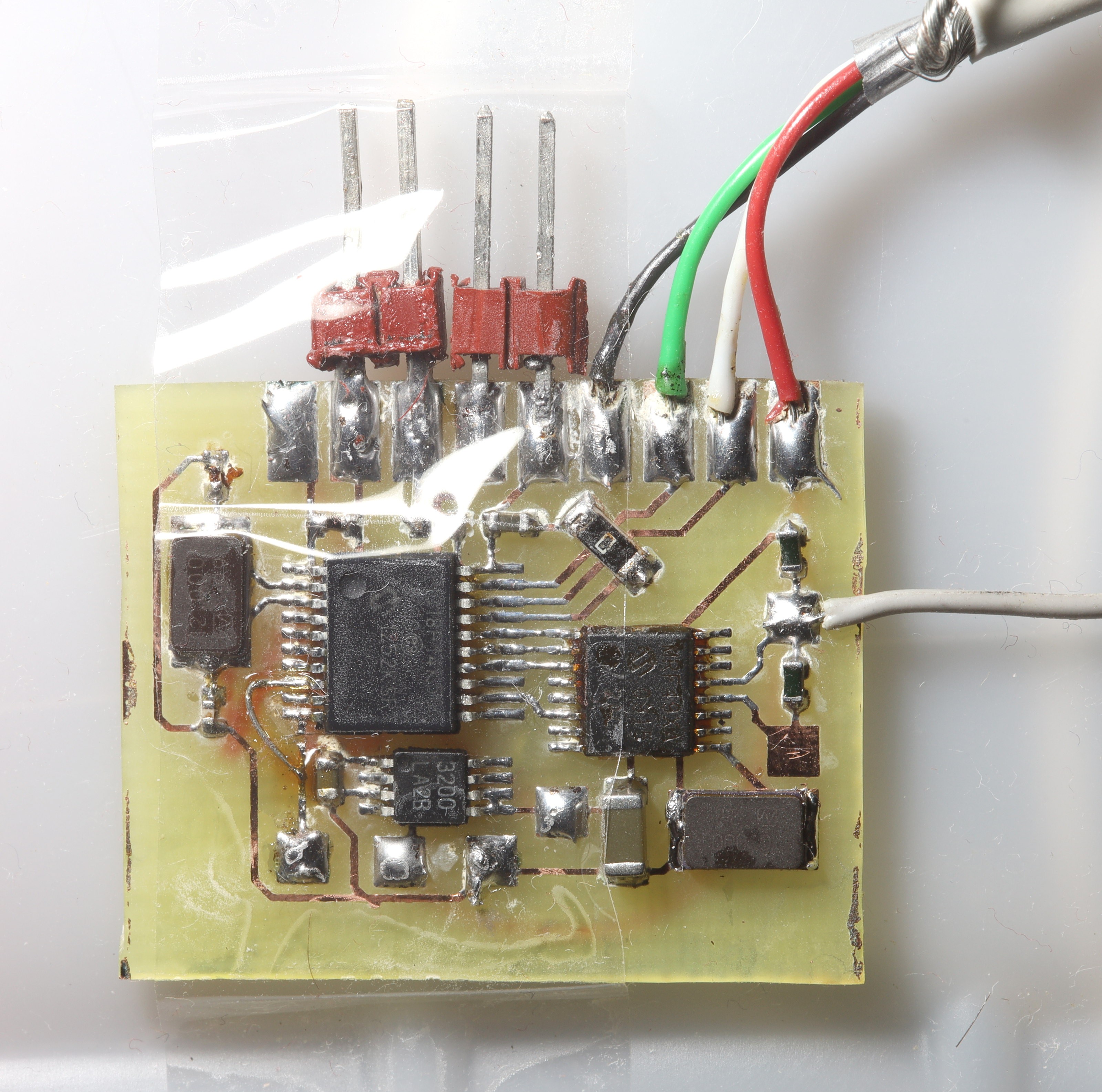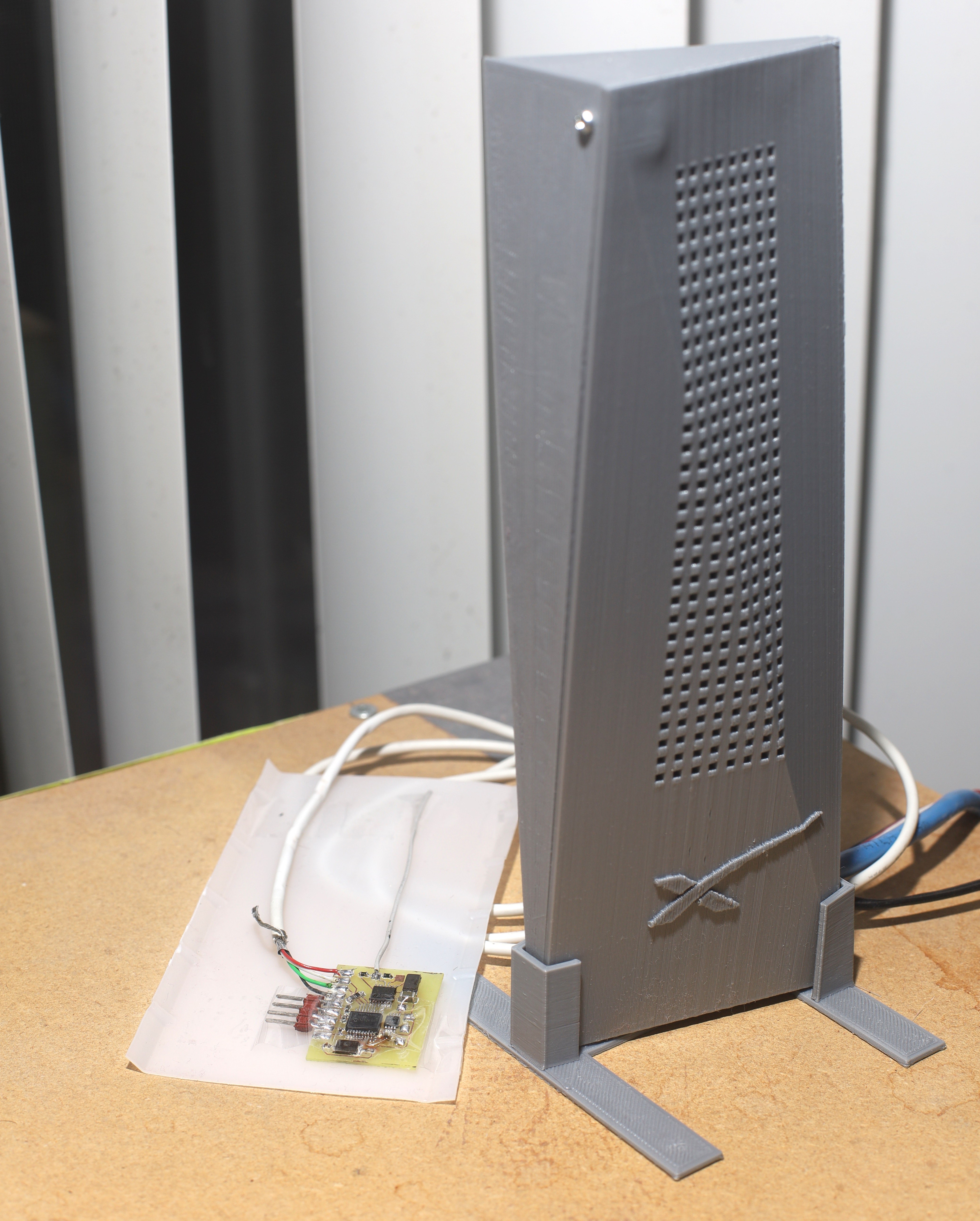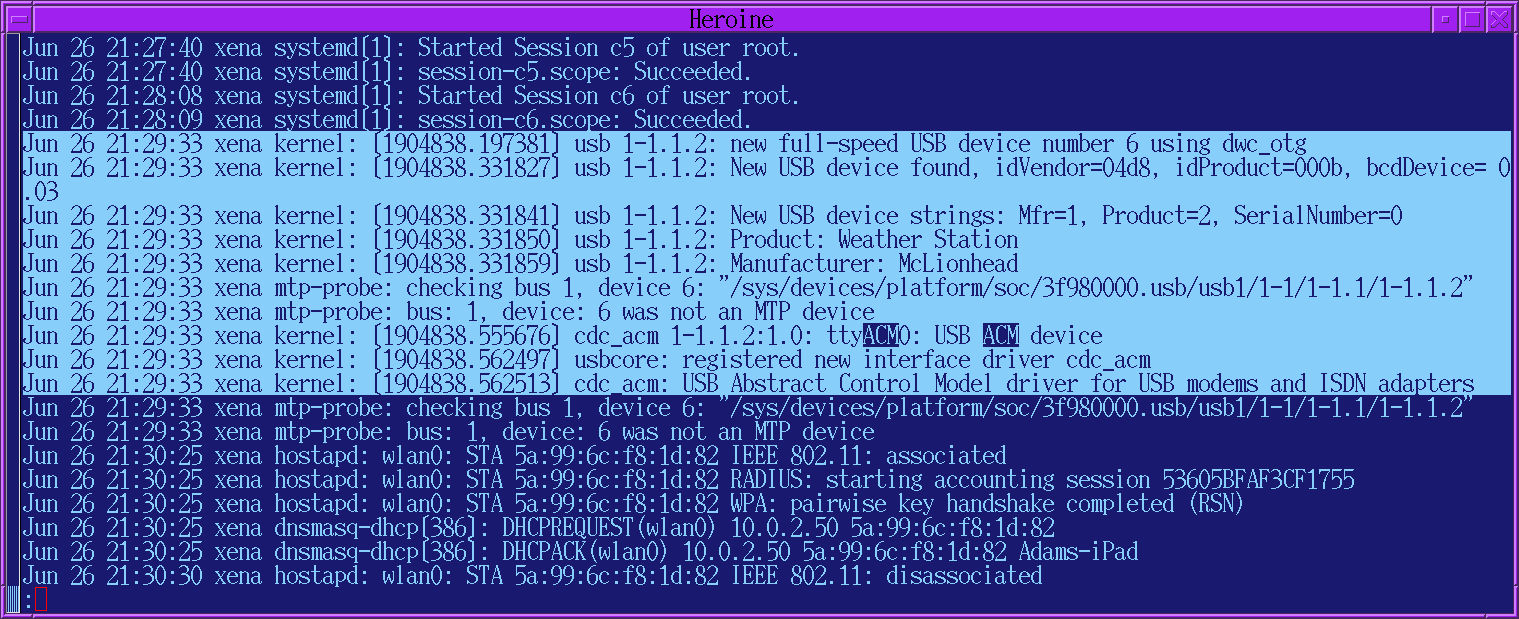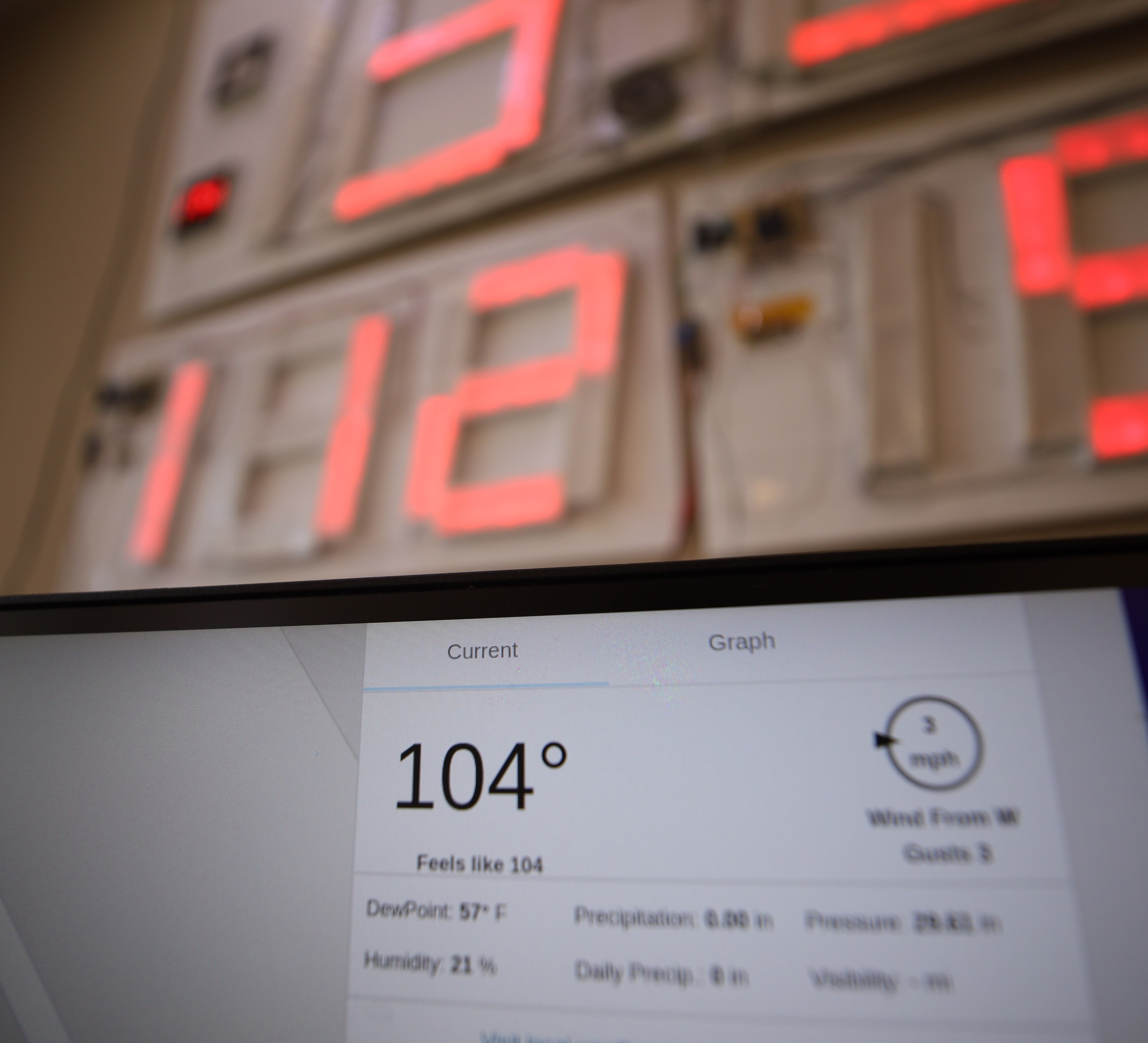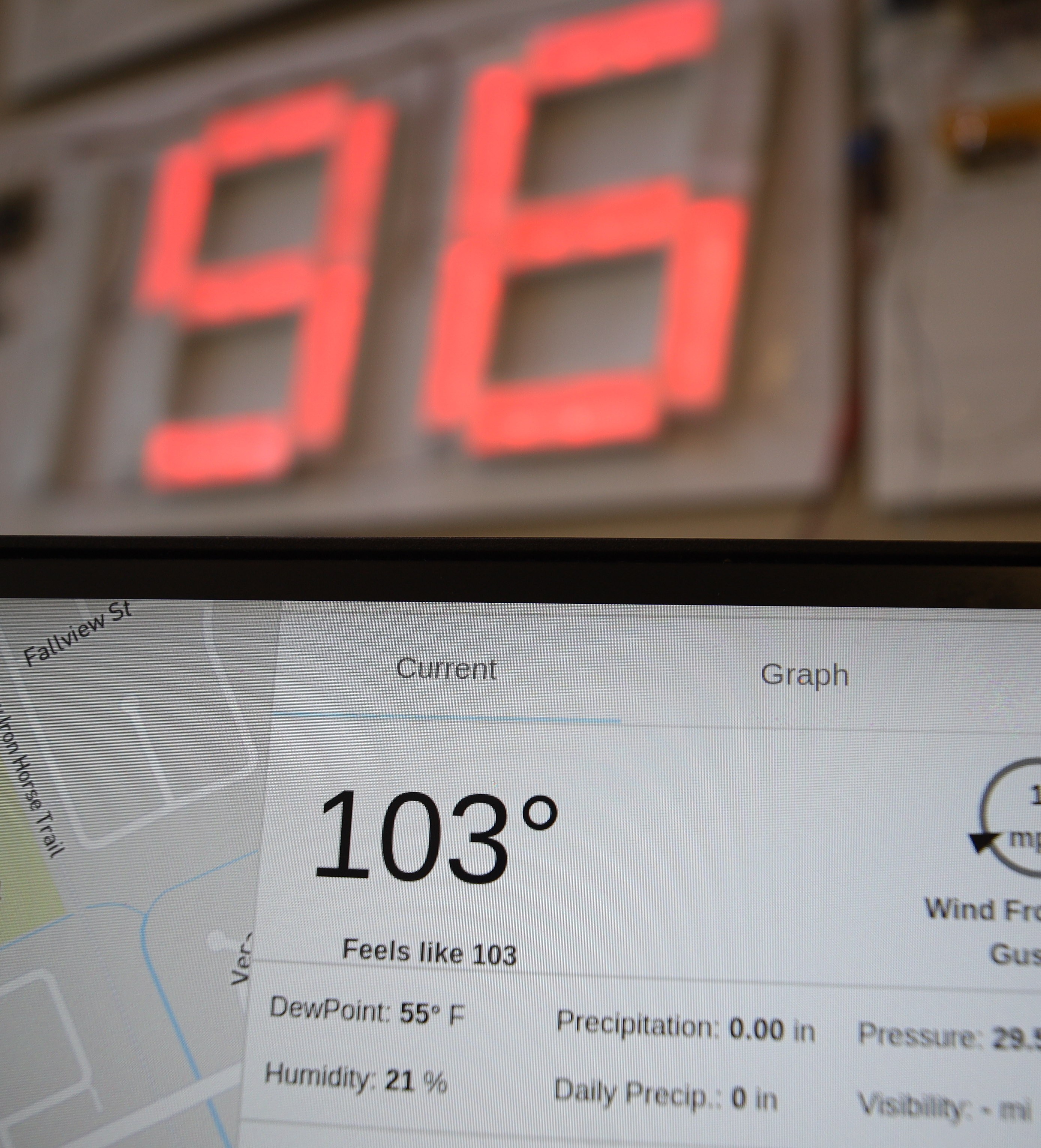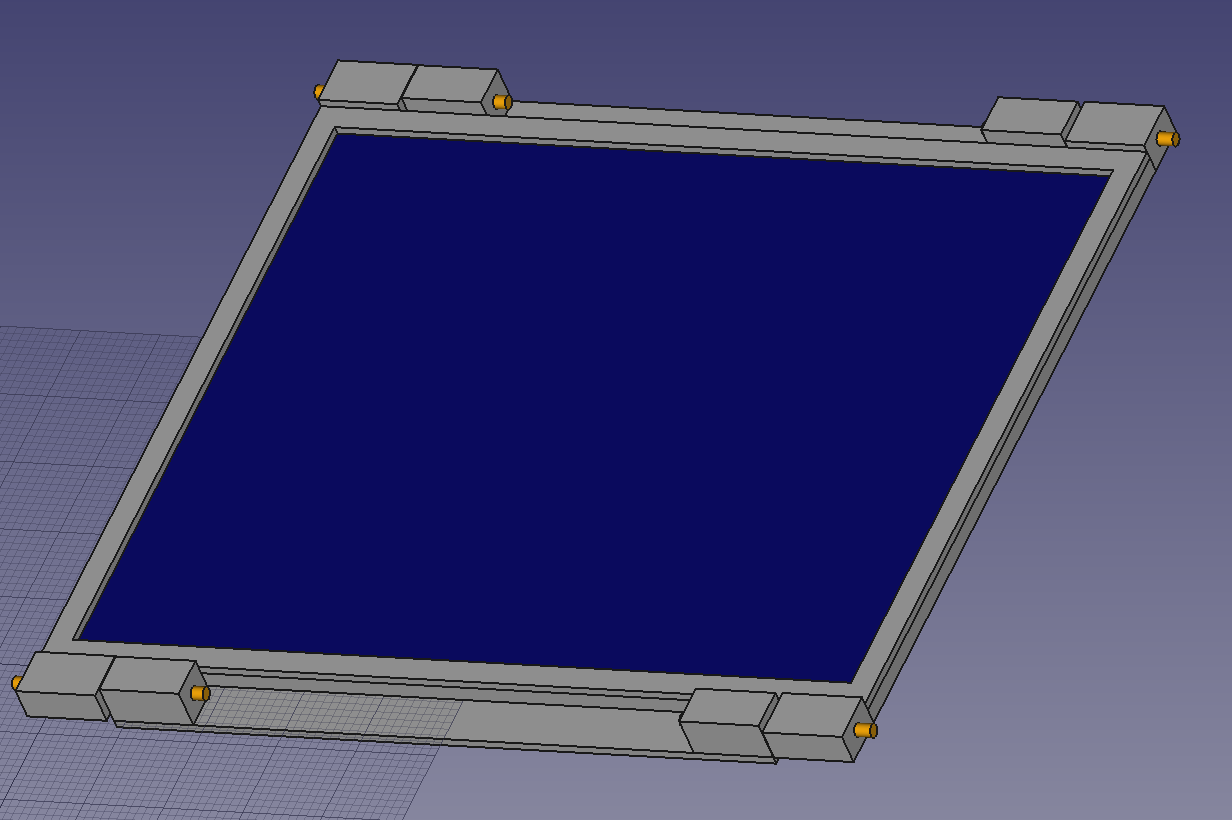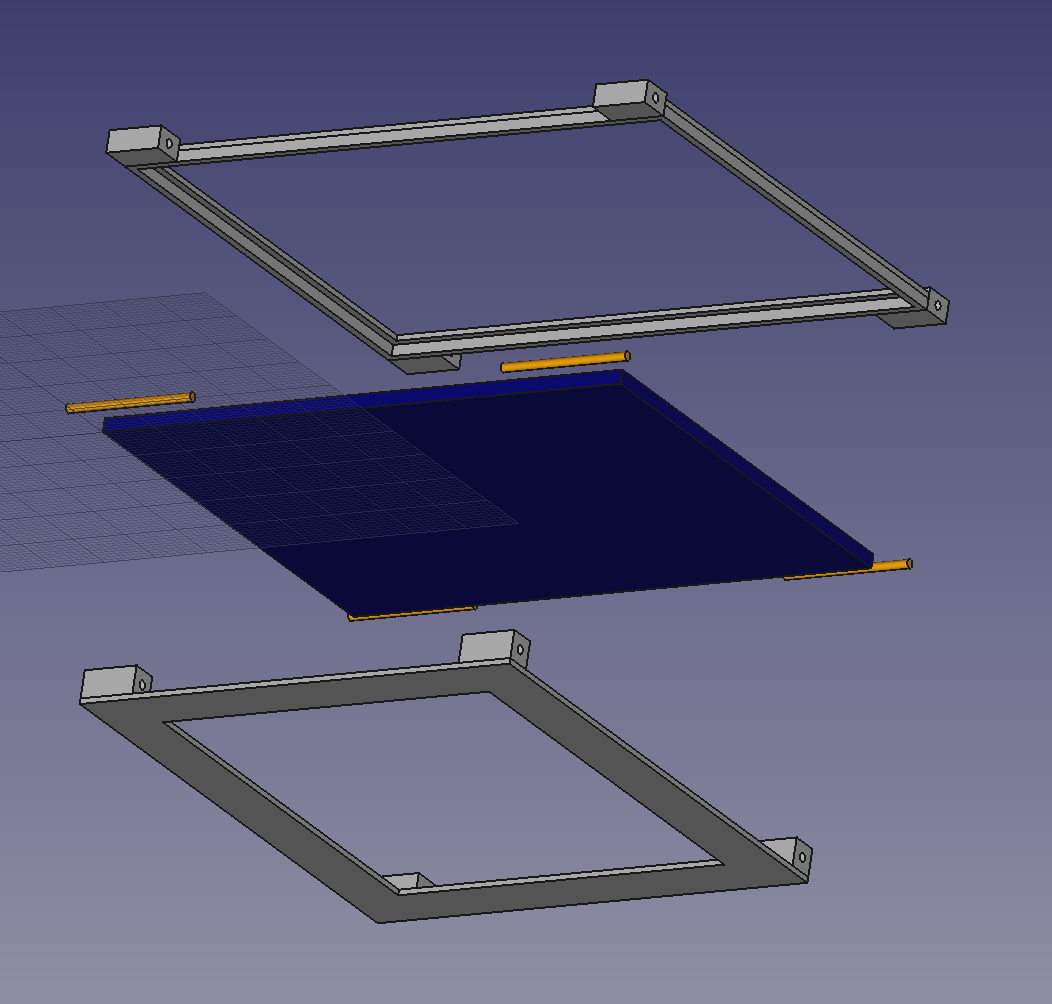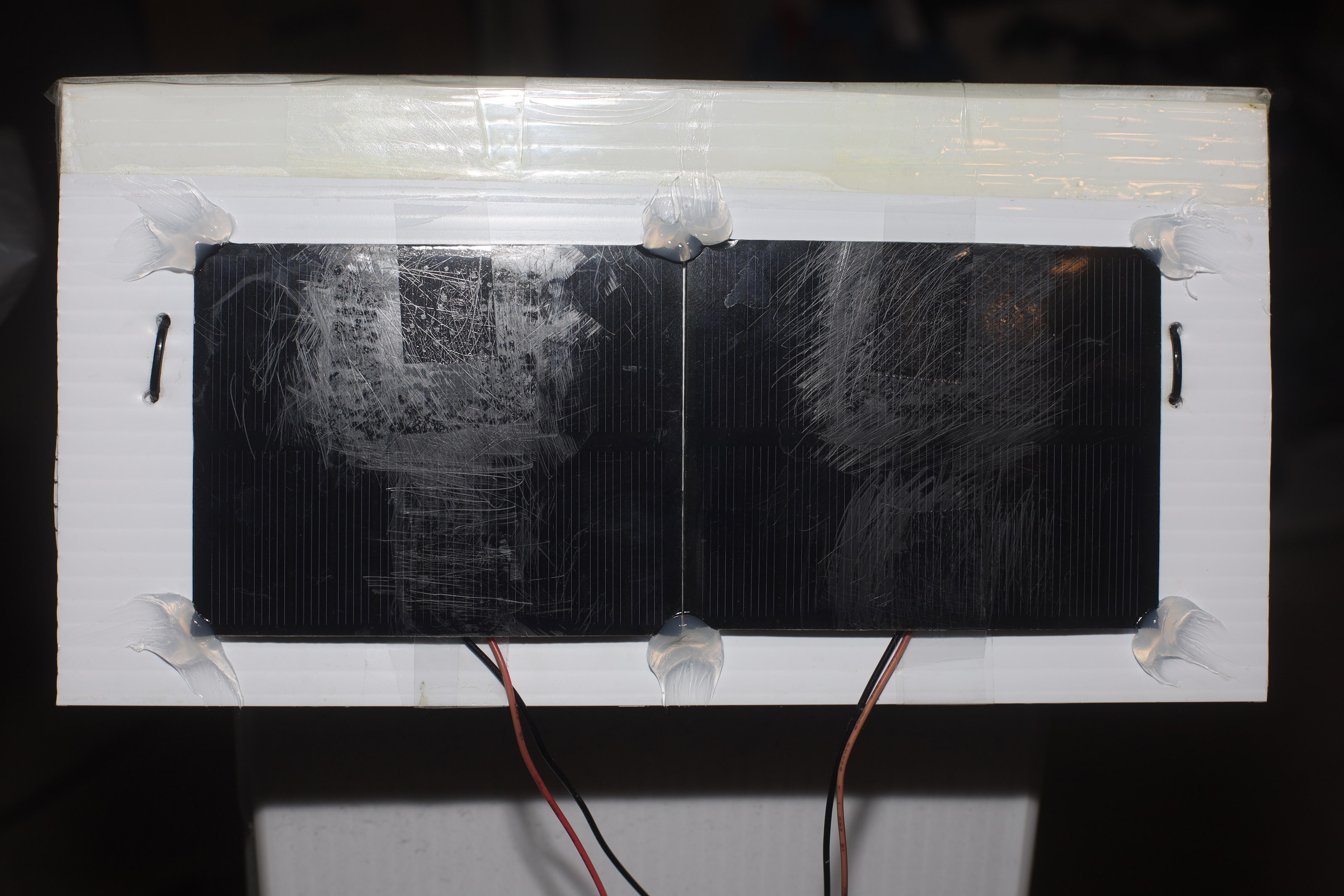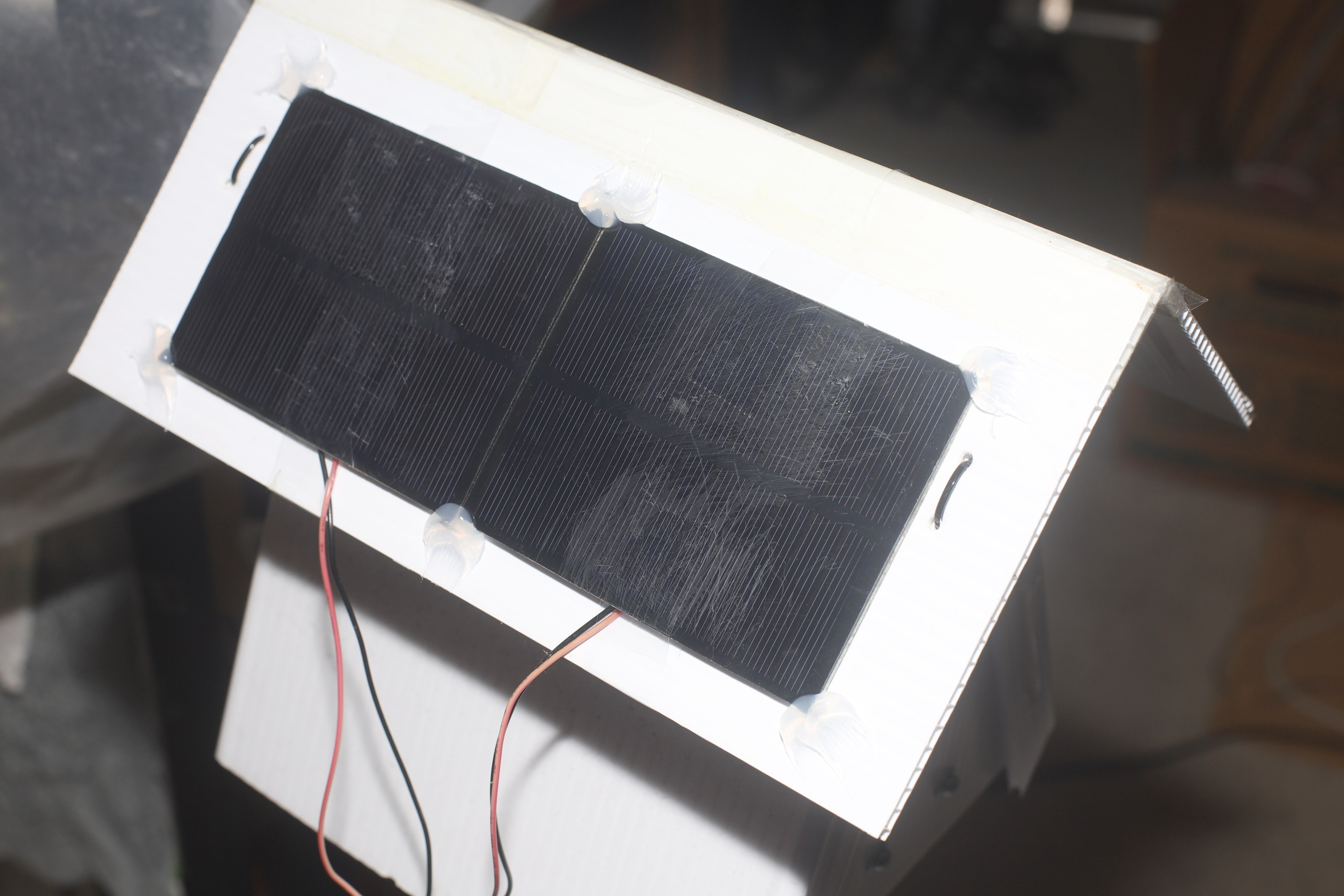-
New base station & death of the outdoor station
07/09/2024 at 23:46 • 0 comments![]()
Along the way to abandoning the outdoor weather station, the apartment got 4 standing desks all taking commands on 433Mhz.
Another new base station was fabricated which multiplexed packets received from the outdoor weather station, indoor temperature sensor, & desk remote control. It also transmitted a temperature from wunderground.com to a display. Multiplexing the received data was quite a job involving byte stuffing.
![]()
The outdoor weather station continued transmitting despite no longer being manetained & no longer being waterproof. Its battery voltage continued to drop to 4.1 by 2024. At 3.6, it's supposed to die. Until it died, the base station would continue logging data. The spider situation out there was a big deal so lions never went out there.
Wunderground continued to be available most of the time after 2021, using the same API key, while very unreliable. To overcome the outages, the base station goes through a list of weather stations to try until one works. That turns it into a very reliable indicator of outdoor temperature.
As a means of regulating the apartment, the difference between reported outdoor temperature & forced air temperature depends on the time. When the reported temperature is 3 deg above the indoor temperature in the evening, forced air keeps the indoor temperature from rising. When the reported temperature is below the indoor temperature in the morning, forced air warms up the apartment. The apartment doesn't cool until the reported temperature is 20 deg below the indoor temperature.
Lions have pondered why this is, since the apartment heats for all outdoor temperatures above indoor temperature & with no forced air. It should be 20 deg below the reported temperature, but it normally can only manetain 15 deg below ambient, at best. The rate of change of temperature in the morning & evening is similar.
The balcony is way above the forced air temperature, so a completely useless measurement. Lion of 2020 might have cooked himself by waiting long into the night for the balcony temperature to come closer to the indoor temperature.
There are commercial remote temperature sensors. The temperature of the forced air would be more useful than the balcony temperature & it could be manes powered. That pulls air from farther away than the side of the building
-
New base station
06/25/2021 at 02:20 • 0 comments3 days of etching & programming later, the new base station was sending wunderground temperature to the LED panel & recording the 2 apartment temperatures. It was an exciting introduction to programming a PIC as a CDC ACM device. It's essential to plug them into a spare confuser for testing instead of the development confuser.
![]()
![]()
![]()
The mane problem is going to be collisions with 3 radios now transmitting. Randomization of the timing is probably going to be necessary.
![]()
The PIC comes up as ttyACM0 just like the big boys. Write to /dev/ttyACM0 & it transmits to the radio. Read from /dev/ttyACM0 & it receives from the radio.
Lions have always been woefully uninterested in using standards in lieu of making things work as fast as possible, whether it was making a custom EDL format for editing video instead of using a standard format, making a custom protocol instead of using the USB audio standard for recording audio. Lions partially supported standards for storing video & audio in the beginning & eventually outsourced it all to ffmpeg which fully supported the standards.
It was a big deal to finally follow the USB HID & CDC ACM standards in the LCD music display & weather station. The growing number of USB projects has made it more practical to implement standards than write a new libusb program every time.
Anyone could have just bought an FTDI chip to access a chip radio from USB, but lions always wanted the flexibility & cost savings of a microcontroller. The FTDI protocol actually has to be licensed to program a microcontroller to act like an FTDI chip. It requires a special driver on the host, a special vendor & product ID, which may not be obvious to Linux users while Windows users have to install an FTDI driver.
The unlicensed device is the CDC ACM device. Once all 156 bytes of configuration descriptors are properly encoded, it just passes I/O from /dev/ttyACM0 to 2 endpoints. It's definitely faster to use libusb than the CDC ACM interface.
-
Going back to wunderground
06/21/2021 at 17:46 • 0 commentsThe 1st heatwave of the year kicked off a growing interest in abandoning the apartment weather station.
There were theories that it would be close to the actual temperature except a few hours when it was in sunlight, or it would match the air pulled into the apartment. It's off in the morning when the building is colder than ambient air & evening when the building is hotter than ambient air, leaving few meaningful readings at all. The amount it's off is highly variable. Wunderground has proven more useful for pulling outside air in. Lions have come to rely on wunderground the same as they did before. There's no getting around needing a few million doll hairs of land to measure temperature.
A better idea is having the LED panel show an average of wunderground temperatures with the raspberry pi logging apartment temperatures. The apartment weather station would switch to being viewed in a web page. The trick is when wunderground was down or the neighbors realized they could buy small countries with their equity & sold their houses, the LED panel wouldn't have anything to show. Wunderground's database was down for the last 5 years of acquisitions, but it's recently been more reliable.
It might have been more practical to have a weather station when wunderground was down most of the time. Wunderground was bought by a number of corporations over the last 10 years, hence why it's been unreliable. There was an API which could be used to access the data before the acquisitions, but now it's gone in the interest of data monetization. The original telnet interface still exists, but doesn't have any personal weather station data.
The API might officially be gone, but reload a personal weather station page, scroll to the bottom of the network log & it'll show it polling the latest data using the API.It downloads the ages old JSON table. The mane unknown is how long the apikeys last. They no longer provide API keys through a formal interface, but clearly API keys are still being created & used.
It seems to be following the path of thunder.atms.purdue.edu. That was sold to weather.unisys.com which shut down a lot of features. Then a number of acquisitions later, it was gone.
The runaway cost of land to put a weather station on is partly from Jeff Masters becoming a multimillionaire off of wunderground's data. It's another example of the creators of wealth getting starved by the wealth they create.
-
1st major heat wave
06/17/2021 at 19:02 • 0 comments![]()
The 1st major heat wave since the weather station's introduction in 2020 came to pass. Although it was functioning for the great heat wave of 2020, it wasn't fully debugged. The idea was knowing outdoor & indoor temperatures would allow better timing for moving air into the room & thereby keep it coolor.
What lions noticed is the indoor temperature rises when cooler outside air is moved in in the morning. The indoor temperature falls when hotter outside air is moved in in the evening. Wunderground data shows the weather station is 3-5 degrees hotter in the evening & 3-5 degrees cooler in the morning than the air. It's affected by the heat of the building. The building lags the air by a few hours.
![]()
A lion can mentally compensate for the lag, but it's too tempting to move air in when the outside temperature is reported as cooler, even though the inside temperature is clearly rising.
-
Solar panel farstening
05/12/2021 at 06:28 • 0 comments![]()
![]()
There was a design for something which allowed the solar panels to be removable, but the problem was farstening the enclosure to the coroplastic without puncturing it. The enclosure would have to be farstened with silicone, so the solar panel might as well just be farstened with silicone & not be removable.
![]()
![]()
There's also the problem of packing tape being used to seal the roof. It got fried, so another layer was added to buy another year. Another roof could be made out of 1 piece, but it would entail throwing away a lot of coroplastic.
The coroplastic held up well, compared to all the tape. Silicone bonds well with coroplastic, but is weak itself. It might be effective at waterproofing punctures in the coroplastic, which might allow bolts to be used to mount the solar panels.
The only other remotely useful data point would be dew point. Lions would know when to moisturize their paws.
Solar powered weather station
A spinoff of heroineclock II from the days before 3D printing
 lion mclionhead
lion mclionhead